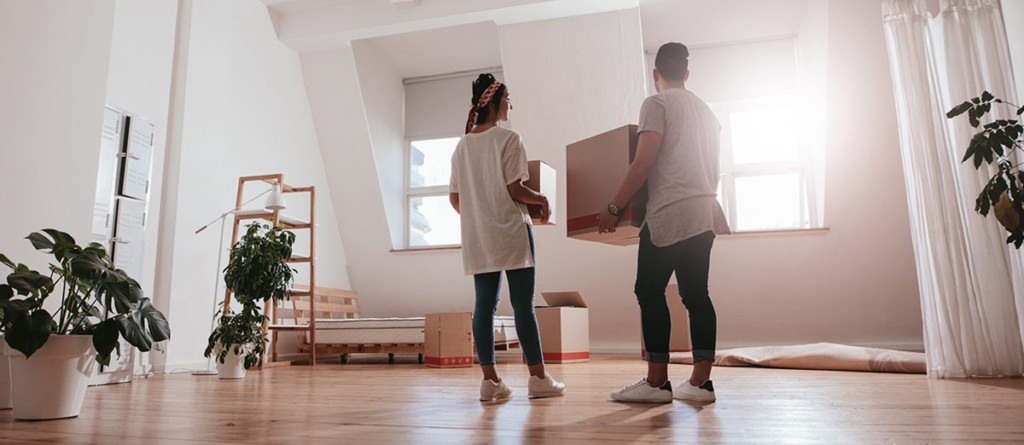If you’re looking to purchase your first home, a tax credit for first-time home buyers is a gift you don’t want to pass up. Wondering how much you could be eligible to receive? Read on to find out!
There are many reasons to own your own home: You’ll be adding to your estate. You’ll no longer have to worry about landlords who are quick to cash your cheques but slow to fix the plumbing. You won’t need anyone’s permission if you feel like knocking down a wall to double the size of a bedroom. The list goes on! But when faced with ever-rising real estate prices and interest rates, not to mention the sundry costs involved in buying a home, you may start to wonder whether becoming a homeowner is worth the trouble.
Fortunately, there are a number of measures in place that are designed to give aspiring homeowners a leg up.

The First-Time Home Buyers’ Tax Credit (HBTC)
Revised upward in 2022, this federal tax credit allows first-time homebuyers to deduct a maximum of $10,000 from their income tax return, granting them a potential rebate of up to $1,500.
Following the Canadian government’s lead, Quebec has also increased the maximum value of its provincial home buyers’ tax credit to $1,500.
In the case of a joint purchase, whether it is with your spouse, common-law or partener, this amount is divided between the future homeowners.
What are the eligibility criteria for the HBTC in Canada?
You may be eligible for this credit if you’re a first-time home buyer or if you haven’t lived in a home owned by you (or your partner) in the last four years.
However, if you qualify for the disability tax credit (DTC) or if a related person who is eligible for the DTC occupies the property as their principal residence no later than one year after its acquisition, you do not have to meet these criteria to be eligible for the HBTC.
How do I claim the HBTC on my tax return?
One of the advantages of the HBTC is how easy it is to claim. When you file your income tax return with the Canada Revenue Agency (CRA), simply enter $10,000 on line 31270. In the case of a joint purchase, you must split this amount so that the combined total does not exceed $10,000.
If you’re a Quebec resident, you’ll need to fill out form TP-752.HA-V and attach it to your income tax return.
How is the value of the tax credit calculated?
The value of the tax credit is calculated by multiplying $10,000 by the lowest personal income tax rate (15%): $10,000 x 0.15 = $1,500.
If you are eligible for both the provincial and federal credits, this total becomes $3,000.
The Home Buyers’ Plan (HBP)
This federal program allows you to borrow up to $35,000 tax-free from your RRSPs. Since you’re essentially taking out a loan, you must begin repaying the funds two years after they’re withdrawn.
For couples, two eligible partners can both participate in the HBP and withdraw up to $35,000 each. The amount is not transferable from one partner to the other. In a blended family, it’s possible for one partner to be eligible while the other is not.
You have 15 years to pay back the full amount withdrawn (i.e., 1/15 per year). If, in a given year, you fail to make the minimum payment, the unpaid amount will be added to your taxable income for that year.
Note that an amount designated as an HBP repayment cannot be claimed as a deduction on your income tax return. Repayments therefore have no impact on your RRSP deduction limit. However, you can designate contributions to your PRPP (pooled registered pension plan) or SPP (specified pension plan) as repayments.
How do I qualify for the HBP?
This program is aimed primarily at first-time home buyers, but you may also be eligible if you haven’t occupied a home owned by you (or your partner) in the last four years. Specifically, this four-year period begins on January 1 of the fourth year prior to the year you make the withdrawal from your RRSP and ends 31 days before the date of withdrawal.
For example, if the funds were withdrawn on May 31, 2024, the four-year period would cover January 1, 2020, to April 30, 2024.
In addition, you must have a written agreement to buy or build a qualifying home. You must also intend to use the property as your principal residence within one year after its purchase or construction.
For a home to qualify, it must be purchased or built before October 1 of the year following the year you withdrew the funds. It’s possible to get an extension in certain situations.
Note that different conditions apply if you are a disabled person or if you are helping a related person with a disability.
The First Home Savings Account (FHSA)
This new federal program, which came into effect on April 1, 2023, allows eligible Canadians aged 18 and over to contribute a maximum of $8,000 per year—up to a lifetime limit of $40,000 per person—for the purpose of saving for their first home. You can carry forward up to $8,000 of unused FHSA participation room to use the following year.
The FHSA combines aspects of the registered retirement savings plan (RRSP), the Home Buyers’ Plan (HBP), and the tax-free savings account (TFSA), making it particularly attractive to first-time homebuyers.
What makes the FHSA unique is that it ceases to be an FHSA 15 years after it is opened or when the saver turns 71. In these cases, the accumulated funds can be transferred to an RRSP or registered retirement income fund (RRIF) and will be taxed at the marginal tax rate at the time of withdrawal. If the funds are withdrawn for other purposes, they will be taxed accordingly.
Keep in mind that first-time homebuyers can combine RRSPs and FHSAs to make up a down payment. To find out more about the First Home Savings Account, read our article on this new tool that makes it easier to save up for your first home.
Who is eligible for the FHSA?
Canadians aged 18 to 71 can open an FHSA if they haven’t lived in a home that they (or their partner) owned in the year the account is opened or in the four preceding years.
Many other programs are available to help you make your home-buying dreams a reality. Whatever your plans, you can count on a Multi-Prêts mortgage broker to offer valuable advice.
Key takeaways
- HBP: This federal program lets you borrow up to $35,000 from your RRSPs, per eligible person, tax-free.
- HBTC: By combining federal and provincial non-refundable tax credits, you could save up to $3,000 in taxes.
- FHSA: This program is a combination of the registered retirement savings plan (RRSP), the Home Buyers’ Plan (HBP), and the tax-free savings account (TFSA).
- To be eligible for these programs, you cannot have occupied a home that either you or your partner owned in the past four years.
- There are many other programs available to help you realize your dream of buying a home.

